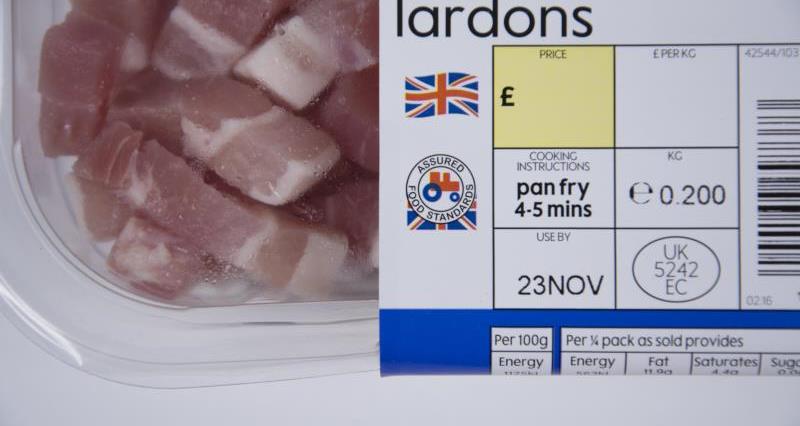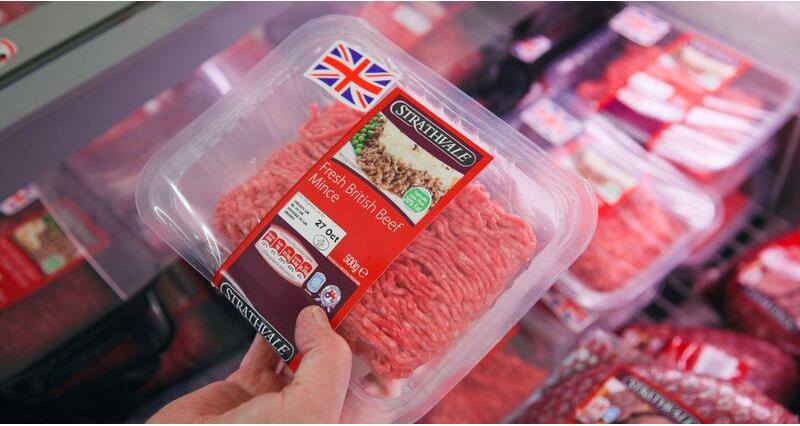British farmers are rightly proud of what they produce, after all we have some of the world’s leading standards in animal welfare and food safety. However, trying to simplify the processes involved in the food chain into the small space available on a label may actually leave consumers more confused.
More than one can chew
On average, consumers will take only 41-81 seconds1 to choose their meat at the point of fixture.
The information therefore needs to be clear, simple, accurate and quickly interpreted at the point of sale. Given the subjectivity around decisions on welfare and sustainability, this is not a decision consumers can make in such a short space of time.
However, there is a greater ‘intention appetite’ from consumers about the way in which food is produced.
AHDB research shows that consumers would find labelling very helpful on both animal welfare (48%) and sustainability (42%)2. However once in store welfare becomes less of a consideration compared to other factors such as appearance and price.
In 2016 AHDB carried out research that found only 35% of consumers actually look at labels in store prior to purchasing.3 With such low levels of interaction therefore, we need to think about whether the label is really the right place for complex information on welfare and the environment.
Not a silver bullet
The government's food strategy sets out plans to introduce mandatory welfare labelling and they are looking at how production labelling could be used to achieve this.
The science tells us that method of production is not the key determinant of animal welfare as it doesn’t indicate the welfare of the animal has been taken into consideration at every stage of life. What is more important is the attention to detail and professional management of our flocks and herds, but this is much more difficult to translate into consumer language.
This is why major retailers and food businesses seek to provide the reassurance and transparency that consumers demand through origin labelling, assurance schemes, marketing terms and information online.
Eggs are often hailed as the success story of mandatory labelling; the sector has clearly defined systems which consumers recognise and can be easily distinguished on a pack of eggs. For the other sectors this is not the case.
“Policymakers should be wary of swallowing the ‘labelling pill’ as the remedy to meeting public health, environment and societal challenges.”
NFU food business adviser Helen Hunt
A dairy-bred calf, reared outside and finished indoors could have been through three production systems and the nuance of these systems won’t be so easily communicated.
By oversimplifying labelling in this way, we risk belittling all the care and attention that UK farmers place on the health and welfare of their animals.
Calls for clarity
Most consumers recognise that UK farms have high animal welfare standards (78%)4 so going forward, clear labelling, displaying the country of origin can allow shoppers to select products produced by British farmers.
While government may not be pushing forward with eco-labelling, retailers are exploring the opportunities with the likes of the IGD (Institute of Grocery Distribution) and Foundation Earth. These industry initiatives look at a variety of indicators to inform these labels, for example the IGD trial looks at climate change, land use, water quality and water use.
If you look at environmental scores in isolation however, products with no or very low nutritional value are likely to come out on top and yield some questionable results.
We cannot expect consumers to understand and navigate the complex analysis of environmental metrics (which are still being debated) and then expect them to make an objective trade-off decision at the point of purchase.
Policymakers should therefore be wary of swallowing the ’labelling pill’ as the remedy to meeting public health, environment and societal challenges.
Standardisation is key
The UK labelling system can be improved by standardising definitions and ensuring information is clear, concise and easily understood.
If consumers wish to learn more about the welfare and sustainability of a product, further information can be provided online and new and existing technology like QR codes can be used to direct shoppers to more information.
Food labels are not going to revolutionise our food system or allow the consumer to make an informed, moral decisions around whether they should buy a product that is healthier for them, is more sustainable or has higher welfare.
Read more on the Food Business Unit's work:


